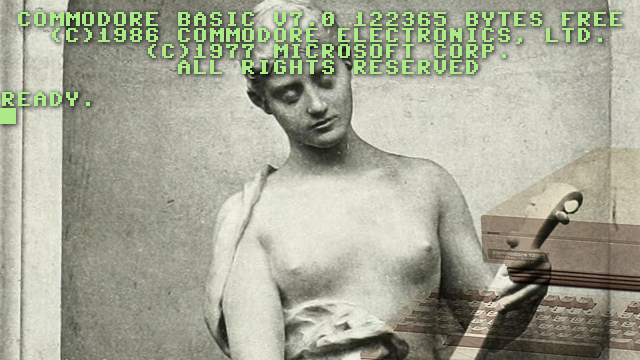Anders Hesselbom
Programmerare, skeptiker, sekulärhumanist, antirasist.
Författare till bok om C64 och senbliven lantis.
Röstar pirat.
Making music in Basic 7.0 part 3
2012-03-08

 When you use the other synthesizer control characters (O, T, U and X), they apply no matter of what voice (V) you have chosen. So when you for example use O to set the octave (0 to 6), all the following notes, regardless of voice, will be played in that octave. This example will play the notes C, D and E in voice 1, octave one. C, D E in voice 1, octave 2, and finally C (at the same time as the previous E), D and E in voice 2, octave 2.
When you use the other synthesizer control characters (O, T, U and X), they apply no matter of what voice (V) you have chosen. So when you for example use O to set the octave (0 to 6), all the following notes, regardless of voice, will be played in that octave. This example will play the notes C, D and E in voice 1, octave one. C, D E in voice 1, octave 2, and finally C (at the same time as the previous E), D and E in voice 2, octave 2.
PLAY "V1O1 CDE O2 CDE V2 CDE"
T (0 to 9) lets you chose from 10 predefined envelopes. The predefined envelopes emulates different instruments (0 is piano, 1 is accordion and so on). Envelopes differ in attack rate, decay rate, sustain level, release rate and waveform. This song uses a harpsichord bass (T6), a drum (T3) and some xylophone (T9).
10 FOR I=1 TO 4 20 PLAY "V1O2T6QCCT3O5CO2T6C" 30 PLAY "V2O5T9CV3G" 40 NEXT
U (0 to 15) controls the volume, but not on the next note, but also on any playing note. This will therefore play both C notes using volume 2.
PLAY "U15 C U2 C"
Finally, X (0 or 1) is used to turn the frequency filter on (1) or off (0).
Categories: Geeky
En kopp kaffe!
Bjud mig på en kopp kaffe (20:-) som tack för bra innehåll!







Leave a Reply